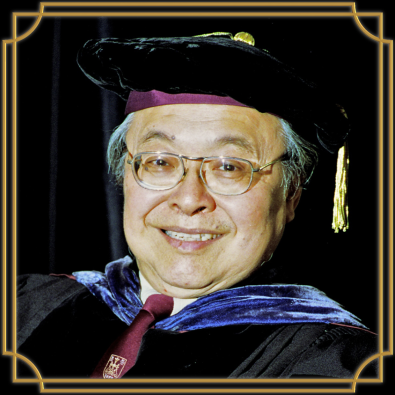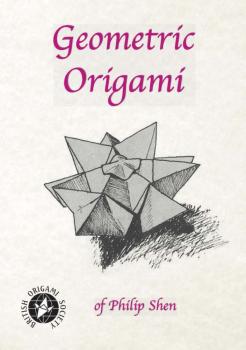Primary tabs

Philip Shen
Hong Kong SAR China
Life and Contribution to Origami
Life
Dr. Philip Shen was born in 1931, in Manila, the Philippines. In 1953, he went to study the philosophy of religion and theology.
In 1963, he received his Ph.D. from the Divinity School of the University of Chicago. He didn’t receive his diploma in person, as in 1962 he joined the Department of Philosophy and Religion of Chung-Chi College, Hong Kong. He taught there for 36 years, and also served as faculty dean and later as head of the college (1990-1994). Shen moved to the USA in the late `90s, where he lived in Boston. Later, he moved to Claremont, California, where he remained until he passed away from cancer in the summer of 2004. Shen was married to Sylvia, and they had two sons, Kish and Kairos.
Origami
Shen pursued origami as a lifelong hobby. He was introduced to it as a child: his father brought him a set of origami books in Chinese. During his graduate studies, Shen worked as a summer camp counselor. He quickly discovered he needed new ideas to keep the children interested. He remembered he enjoyed origami as a child, and the children at camp loved it instantly. This, and a later adult-education class in origami he had given, had set him on a path to create his own origami.
Shen enjoyed the folding process itself. He believed that the folding process is often more important than the outcome. He made distinctions between creating, folding, and teaching origami. He enjoyed exploring less common geometries. For example, he enjoyed trisecting angles and edges, discovering many new possibilities. He took great joy in designing three-dimensional models. Such models should have their own structure and should look good from all angles and directions, even when held in mid-air. The appearance of models was less important to Shen than their structure: “The appearance of a model to me is secondary to its structure,” he said. He strived for simplicity and economy in origami. He wanted there to be no wasted or leftover folds. He preferred to pre-crease the model and then collapse it in one step.
Shen started creating (or discovering) new folds by trying to correct defects in traditional models. Perhaps his first original fold is his waterbomb lock, an improvement on the traditional waterbomb that will not come apart. Another example is his omega star (a model that — in my teens — was quite prevalent in Israel; I had learned it from someone at school, who didn’t do any other origami), is an ingenious variation of E.D. Sullivan’s XYZ. XYZ and the Omega star were published in The Flapping Bird, 1976: “Neither a line drawing nor a photograph can do justice to the Omega star. Philips Shen’s original model is folded from a mirror-finish gold foil wrappingpaper; the highlights and reflections of the curved surfaces combine with the rigorous basic structure to make this one of the loveliest of all origami ornaments."
When he set out to create models, he usually didn’t have a specific idea in mind (although there were exceptions). He played with the paper, trying to see how points and lines interact with a guiding hand. As such, he sometimes felt that his models created themselves and that he was “only the midwife.”
This article was authored by Boaz Shuval.
Profile photo by Prof. Cheung Chan Fai.
Dave Brill tells about Philip Shen
Part of the CFC documentary series about the great masters of the past, in which we interview a CFC member about those masters. And here we have Dave Brill talking about one of the greatest masters - Philip Shen.
The video was recorded on 24/5/2024.

